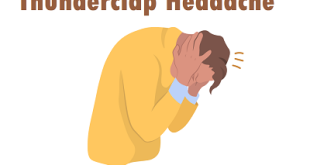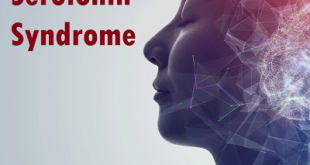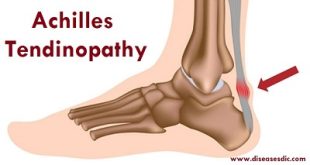Definition
Agnosia is a rare neurological disorder which causes the loss of ability to recognize any familiar person, object and sounds or the ability to comprehend the meaning of any object or difficulty in processing sensory information, such as touch, sound, and light even in the presence of intact senses. In Agnosis, brain lesions develop due to neurological ailments or brain injury mainly in the occipital, temporal, or parietal lobe of the ventral stem of the brain. Other than neurological illness, Agnosia can also result from cerebral stroke, severe head injury, developmental disorders, or dementia.
Agnosia
History
The term ‘agnosia’ comes from the Ancient Greek ἀγνωσία (agnosia), “ignorance”, “absence of knowledge”. It was introduced by Sigmund Freud in 1891 “For disturbances in the recognition of objects, which Finkelnburg classes as asymbolia, I should like to propose the term ‘agnosia’.” Prior to Freud’s introduction of the term, some of the first ideas about agnosia came from Carl Wernicke, who created theories about receptive aphasia in 1874. He noted that individuals with receptive aphasia did not possess the ability to understand speech or repeat words. He believed that receptive aphasia was due to lesions of the posterior third of the left superior temporal gyrus. Due to these lesions, Wernicke believed that individuals with receptive aphasia had a limited deafness for certain sounds and frequencies in speech.
After Wernicke, came Kussmaul in 1877 who attempted to explain why auditory verbal agnosia, also known as word deafness, occurs. Contrary to Wernicke’s explanations, Kussmaul believed auditory verbal agnosia was the result of major destruction to the first left temporal gyrus. Kussmaul also posited about the origins of alexia (acquired dyslexia) also known as word blindness. He believed that word blindness was the result of lesions to the left angular and supramarginal gyri.
Heinrich Lissauer shared his ideas about agnosia after Wernicke and Kussmaul. In 1890, he theorized that there were two ways in which object recognition impairment could occur. One way in which impairment could occur was if there was damage to early perceptual processing or if there was damage to the actual object representation. If the actual object representation was damaged, this would not allow the object to be stored in visual memory, and therefore the individual would not be able to recognize the object. During the time of Wernicke, Kussmaul and Lissauer there was little known about the cerebral cortex. Today, with new neuroimaging techniques, we have been able to expand our knowledge on agnosia greatly.
Types
There are three main types: visual, auditory, and tactile.
Visual agnosia impairs one’s ability to process incoming visual information and understand its meaning. There are two main types of visual agnosia: apperceptive and associative. People with apperceptive agnosia cannot properly process what they see and distinguish between different visual stimuli. Even the same object shown from different angles may not appear as the same object to them. People with associative agnosia cannot match the object they see with the information stored in their memory. They can draw a picture of an object (which means they process the information from the visual stimuli correctly), but they cannot tell what it is. A type of apperceptive agnosia is prosopagnosia where the affected person is unable to recognize faces. This often occurs in Alzheimer’s disease patients and autists.
Auditory agnosia or pure word deafness is the inability to process sounds. Again, just like in case of visual agnosia, the hearing quality is not affected. Rather, it stems from the disconnect between the sound-processing region and the language centers in the brain. Patients’ reading, writing, and speaking abilities remain intact. A sub-type of auditory agnosia, phonagnosia is a term that is used to specifically describe the inability to recognize familiar voices with this condition, you can recognize the spoken word or environmental sounds.
Tactile agnosia is the inability to recognize objects by touch. You can assess and describe what you feel, but this information tells you nothing about the object. With astereognosis, you can identify the object by sight, despite the inability to identify it by touching.
Risk factors
The risk factors associated with Agnosia include the following:
- Caucasian race is more prone to Agnosia
- Agnosia most commonly affects women
- Older age
- Any types of severe head injury
- Smoking habit
- Obesity
If an individual is suffering from the vascular illness like coronary heart disease, hypercholesterolemia, atherosclerosis, diabetes, hypertension, etc.
Causes of agnosia
Agnosia is caused by damage to the parietal, temporal, or occipital lobe of the brain. These areas store memories of the uses and importance of familiar objects, sights, and sounds and integrate memory with perception and identification.
It often occurs suddenly after a head injury or stroke. Other causes include tumors, abscesses (pockets of pus), and disorders that cause progressive degeneration of certain areas of the brain, such as Alzheimer disease.
Symptoms of agnosia
The symptoms vary depending on the lobe that is damaged:
Parietal lobe: This type of damage usually results from a stroke. People have difficulty identifying a familiar object (such as a key or safety pin) that is placed in the hand on the side of the body opposite the damage (called somatosensory agnosia). However, when they look at the object, they immediately recognize and can identify it. Some people insist that nothing is wrong or ignore the problem, even when one side of their body is paralyzed.
Occipital lobe: People cannot recognize common objects, such as a spoon or a pencil, even though they can see these things. This impairment is called visual agnosia. They may not recognize familiar faces (called prosopagnosia) or places (called environmental agnosia).
Temporal lobe: People may be unable to recognize sounds even though they can hear sounds. This impairment is called auditory agnosia.
Diagnosis and tests
- The first step in diagnosing agnosia is getting properly evaluated by a doctor. You will be asked to identify common objects using your sight, touch, or other sense. A physical exam may help your doctor diagnose another disorder that may be the cause of your symptoms, such as vision or hearing problems.
- There are some standardized tests assessing brain function (neuropsychologic testing) that ask questions or request to carry out specific actions.
- Imaging tests such as MRI and CT scans may also be used depending on the diagnosis, symptoms, and medical history of the patient.
Treatment and medications
- There is no specific treatment for agnosia. If doctors are able to identify the cause, the treatment will be tailored to the specific problem. For example, if an abscess is causing agnosia, your doctor may prescribe you antibiotics and refer you for a surgery to drain the abscess.
- If the cause of agnosia is properly treated, the recovery should occur within the first three months, although it may take up to a year. The success of recovery depends on the type, size, and location of the damage, the severity of the impairment, the age of the affected person, as well as the effectiveness of treatment.
- People with agnosia can benefit from speech and occupational therapy to learn how to deal with this impairment in their daily life.
Prevention of agnosia
As such there are no preventive measures for this disease. However, it can be restricted to a certain level through early detection of the disease associated with proper medical treatments and related therapies. Also, the affected individual can follow the below-mentioned diet items in order to prevent further complications:
- More consumption of fresh fruits and vegetables, dairy products, soybean, walnut oil, oily foods, seafood, and sweets.
- Limit the consumption of fish and meat.
 Diseases Treatments Dictionary This is complete solution to read all diseases treatments Which covers Prevention, Causes, Symptoms, Medical Terms, Drugs, Prescription, Natural Remedies with cures and Treatments. Most of the common diseases were listed in names, split with categories.
Diseases Treatments Dictionary This is complete solution to read all diseases treatments Which covers Prevention, Causes, Symptoms, Medical Terms, Drugs, Prescription, Natural Remedies with cures and Treatments. Most of the common diseases were listed in names, split with categories.








Brain Disease
I Believe it is not a main disease because it is as result of another disease.or is acquired after a stroke.